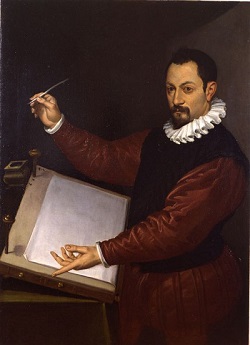| Arts Council of Wales Surrenders Its Independence |
Culture in the Senedd |
| Arts Council of Wales Corporate Plan 2018-2023 , Policy-Making of Wales , August 20, 2020 |
 The article of five days ago looked at how the Government perceived its relationship to the Arts Council of Wales. By extension it surmised how the Government perceived its relationship to its citizens, a relationship that has occurred and reoccurred in this year of retrospection.
The article of five days ago looked at how the Government perceived its relationship to the Arts Council of Wales. By extension it surmised how the Government perceived its relationship to its citizens, a relationship that has occurred and reoccurred in this year of retrospection.This article looks at how the Council speaks of itself. There are words and there are deeds. The Arts Council of Wales has been receiving high commendation on social media in mid-2020. Its role has been to disburse and allocate what funds there are to sustain the arts in this period with neither activity nor any certainty of when this time of inactivity may end. So the deeds may broadly be seen as good. The words about the future ought to speak of the deeds to come. Language is the spur to action. The greater the congruence between language and world the more effective is its translation into deed and action. The 34 pages of the Corporate Plan are remarkable. They are also unique. The Council disburses money for dance, theatre, poetry, visual arts, circus. It has to strike a balance across forms, location, language. Demand is greater than supply. It is an exacting challenge by any standard. The “Plan” has nothing to say on these issues. “We will reflect the Government’s policy priorities in our programmes of work.” “The Arts Council operates under the long standing convention of the “arm’s length principle”. However, as a Welsh Government Sponsored Body it is perfectly reasonable for us to work with Government to develop programmes of work that meet the priorities of the Welsh public.” Thus the Plan, in making government and people synonymous, shrugs off its obligation to serve the public. “In our opinion, a confident and effective arts organisation is able to articulate the benefits of the organisation’s activities and their contribution to community well being, have identified and analysed the barriers to engagement, set specific targets to drive change.” It is an opinion that bypasses the organisation's purpose, to be a council, to be concerned with the arts. Art is a aesthetic phenomenon and its Council should assert that. “The culture of Wales is a world culture and this is the arena it needs to operate in, locally and internationally.” Meaningless. A culture operates in a world culture locally? “International connections provide important routes for sustaining careers, for benchmarking quality, and for enriching artistic practice through collaboration and the sharing of new ideas.” There is no benchmarking of quality. As a substitute London reviewers, when they on occasion selectively come to Wales, are given a status over indigenous writers. If the document is unabashed about relinquishing its primary task it is happy to admit to being a vehicle for propaganda. “We have to change hearts and minds across the arts in Wales.” “A resilient organisation is embedded within the community that it serves, focuses on its audience and adopts a business model that can withstand change, whether planned or unexpected. A resilient organisation is one that has the skill, capacity and resources to endure in the longer term.” This is cant, since the Arts Council of Wales is the provider of resources. The axe falls or does not fall depending on decisions made in Cardiff. Enthusiasm for organisations linked to community is variable, as seen in the fate of Theatr Powys. The Plan surprisingly is made of two parts. On page 17 the Council ceases to speak altogether and a series of other speakers feature. They are active in different art forms. The old motto advises “Trust the tale, not the teller.” It is unusual for artists to talk interestingly about what they make, but it is also unnecessary. It occurs because the great publicity machine needs it. Beneath is a fallacy, that character and art are a phenomenon in fusion. So here the emphasis is on autobiography. The comments on art include: “Where art sits in the world, ultimately that it [sic] is the baseline of creativity.” A sentence from which meaning has been banished. It is also a leap away from the task in hand: “In the future every public sector team, every corner of industry, will have a “creative”, whether you want to call them an artist or not. Giving them the freedom to create concepts and ideas is exactly what the world needs, in order to keep improving.” Thus an expert on organisational design. “The countries that are going to model radical change will be small nations because they will be able to model it in scalable ways – we can do things in Wales that in England will take decades because there is just so much more institutional bedrock to shift.” No evidence. “Modelling radical change.” That presumably means not doing it, whatever it is. The Plan highlights this one: “I think we should cultivate dissent in the little children and then send them out into the world to rage against us.” “I was very young when I discovered language.” Unlike the rest of us. This document lacks seriousness. It could only exist in the public discourse of Wales. It is in the public domain but the public are not expected to read it. The public is certainly not expected to comment. Its reading left me deeply depressed. |
Reviewed by: Adam Somerset |
This review has been read 866 times There are 27 other reviews of productions with this title in our database:
|
